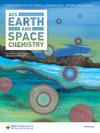Light-Triggered Droplet Gating Strategy Based on Janus Membrane Fabricated by Femtosecond Laser
IF 2.9
3区 化学
Q2 CHEMISTRY, MULTIDISCIPLINARY
引用次数: 0
Abstract
The characteristics of the directed transport of liquids based on Janus membranes play a crucial role in practical applications in energy, materials, physics, chemistry, medicine, biology, and other fields. Although extensive progress has been made, it is still difficult to realize the accurate controllability of liquid directional transmembrane transport. The current gating strategies for the directed transport of liquids based on Janus membranes still have some limitations: (a) using magnetic fluid may cause contamination due to the addition of new substances and (b) utilizing hydrophobicity/hydrophilicity conversion of titanium dioxide requires a long switching time (over 30 min). Herein, a strategy is proposed to precisely control liquid directional transport by altering the wettability of droplets on Janus films prepared by a femtosecond laser through photothermal effects. Infrared laser irradiation on Janus film coated with CNTs can effectively convert light energy into thermal energy, rapidly increase the surface temperature of Janus film, and change the wettability of the liquid on the film. Liquid transmembrane directional transport can be achieved within a few seconds without contaminating the transported liquid. The proposed gating strategy can enable the application of Janus membranes in various scenarios such as microchemical reactions, biological cell culture, and interface self-propulsion.

基于飞秒激光制造的 Janus 膜的光触发液滴门控策略
基于 Janus 膜的液体定向传输特性在能源、材料、物理、化学、医学、生物等领域的实际应用中发挥着至关重要的作用。尽管已经取得了广泛的进展,但要实现液体定向跨膜传输的精确可控性仍然困难重重。目前基于 Janus 膜的液体定向传输选通策略仍存在一些局限性:(a)使用磁性流体可能会因添加新物质而造成污染;(b)利用二氧化钛的疏水性/亲水性转换需要较长的切换时间(超过 30 分钟)。本文提出了一种策略,通过光热效应改变飞秒激光制备的 Janus 薄膜上液滴的润湿性,从而精确控制液体的定向传输。红外激光照射涂有 CNTs 的 Janus 薄膜,能有效地将光能转化为热能,迅速提高 Janus 薄膜的表面温度,改变薄膜上液体的润湿性。液体跨膜定向传输可在几秒钟内实现,且不会污染传输的液体。所提出的门控策略可使 Janus 膜应用于各种场合,如微化学反应、生物细胞培养和界面自推进。
本文章由计算机程序翻译,如有差异,请以英文原文为准。
求助全文
约1分钟内获得全文
求助全文
来源期刊

ACS Earth and Space Chemistry
Earth and Planetary Sciences-Geochemistry and Petrology
CiteScore
5.30
自引率
11.80%
发文量
249
期刊介绍:
The scope of ACS Earth and Space Chemistry includes the application of analytical, experimental and theoretical chemistry to investigate research questions relevant to the Earth and Space. The journal encompasses the highly interdisciplinary nature of research in this area, while emphasizing chemistry and chemical research tools as the unifying theme. The journal publishes broadly in the domains of high- and low-temperature geochemistry, atmospheric chemistry, marine chemistry, planetary chemistry, astrochemistry, and analytical geochemistry. ACS Earth and Space Chemistry publishes Articles, Letters, Reviews, and Features to provide flexible formats to readily communicate all aspects of research in these fields.
 求助内容:
求助内容: 应助结果提醒方式:
应助结果提醒方式:


